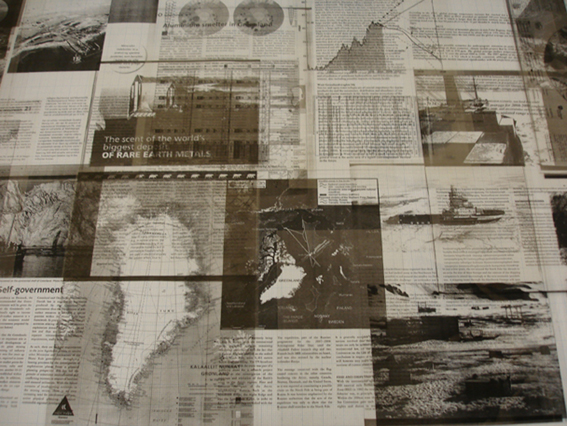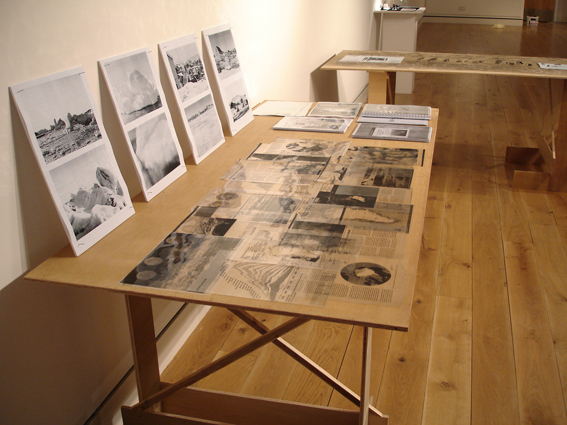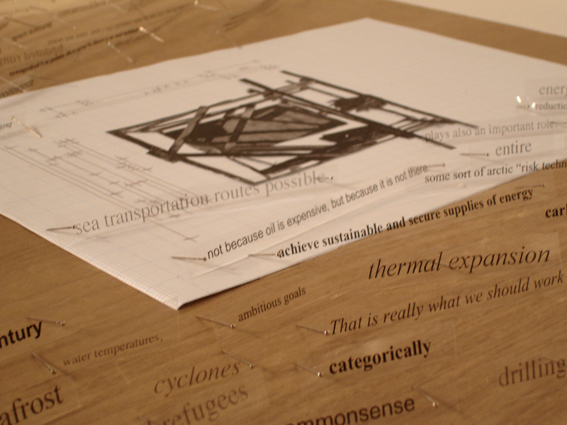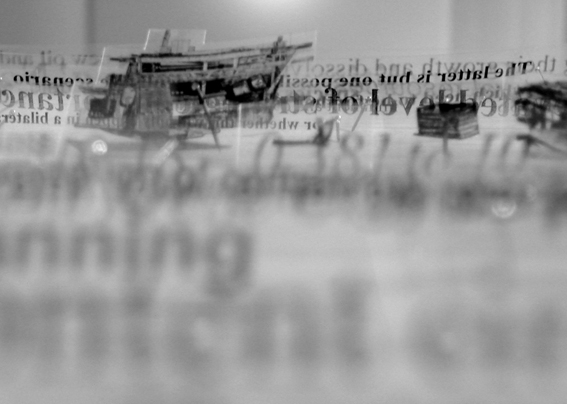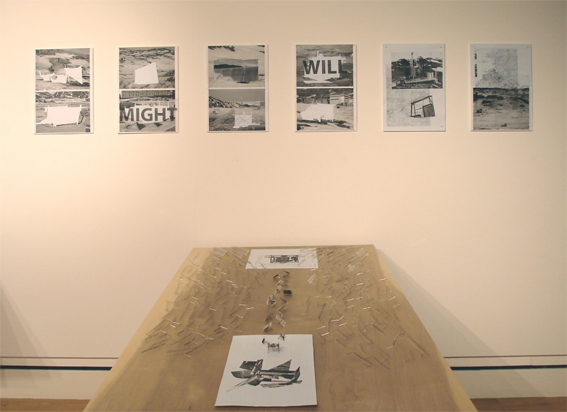MIGHT/WILL (2009)
The installation MIGHT/WILL considers climate change as a deeply cultural problem, looking at the complex relationships between land use development and local subsistence economy in West Greenland - and their visibility in the cultural landscape. At the centre of this investigation stands the question what might or will lie ahead for Greenland in the near future. In a time of rapid cultural and ecological shift, climate change confronts the human will to act with or against nature with the might - the force - of uncontrollable global processes.
The collages, photographs, collected scientific and journalistic reports, photocopied on paper and acetates and held together loosely with pins, aim to make visible how improvised and unstable our understanding of the current situation is. Text fragments are arranged in a jumble of flimsy words, contradicting, misquoting and reinforcing each other by chance encounter or on purpose.
The work includes a series of photographs and collages documenting the variety of the Greenlandic "hundeskur", wooden structures used for storing dogsledding equipment and dogfood. They may serve as a metaphor for improvised, ramshackle but flexible, site-specific and temporarily appropriate solutions. The "hundeskur" are visual markers of the cultural importance of dogsledding, particularly in connection to a very specifically adapted subsistence economy. They embody and represent immediate responses to the everchanging conditions of the land. These structures are bound to disappear with dogsledding, as the climate warms and the snow and icefishing seasons shorten. The dogteams and their sheds, along with the subsistence economies they support, will be replaced - by what? There are many plans in circulation concerning Greenland's potential future land use and economic development, including hydroelectric projects, aluminium factories, oil and mining. In a cynical twist, most of these plans are directly or indirectly serving the resource and energy hungry, fossil-fuel-dependent industries that have caused the ground to shift under Greenlanders' feet in the first place.
This conscious choice to 'develop' by means of self-exploitation, is critically addressed here, asking what human agency might or will become under the pressures of climate change.
MIGHT/WILL is based on fieldwork in West Greenland in 2008 and 2009. It was exhibited at Shetland Museum and Archives, Lerwick, UK, in the group exhibition 'Sikurluk' in 2010.
